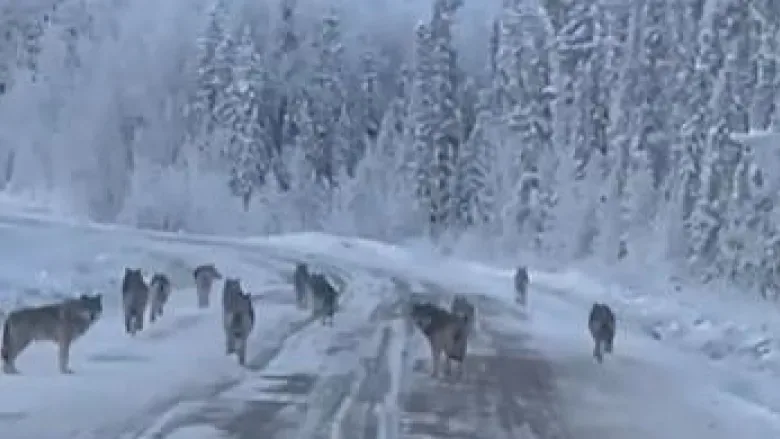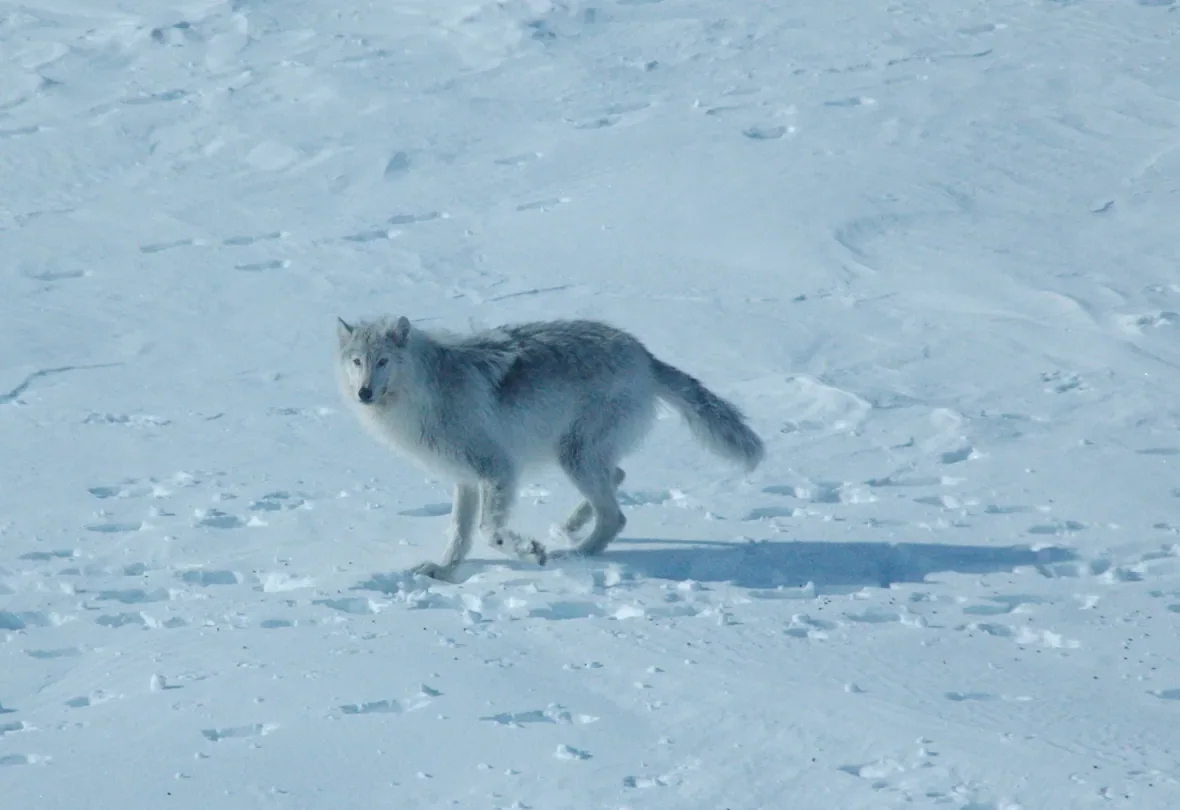
'That is super cool!': N.W.T. man stunned as he films wolf pack in the wild
Morgan Watsyk admits his eyesight is pretty bad, so at first he thought those dark forms on the road ahead were mountain goats.
"Because I'm getting closer to Wrigley [N.W.T], right? You're getting closer to the mountains and whatnot," he recalled.
"But I was thinking there shouldn't be no herd of mountain goats in this area."
He quickly whipped out his phone and zoomed in to get a better look. The video captures his surprise.
"This a pack of wolves?" an incredulous Watsyk says in the 16-second video. "Holy shit! That's a pack of wolves! Oh wow, that is super cool!"
SEE ALSO: Canada ranks high for mammal movement between protected areas: Study
It was indeed a pack of wolves. Eleven of them, it looks like, spread across the remote and snowy road. They soon seem to notice Watsyk's vehicle and start running up the highway before the short video ends.

'It is an awesome sighting,' said N.W.T. regional biologist Dean Cluff about Watsyk's encounter. (Submitted by Dawn Curtis)
"I was really definitely quite amazed to see 11 wolves at once. So yeah, somebody was definitely looking after me there that day!" Watsyk said later.
The Fort Simpson, N.W.T., man has lived in the North for most of his life and he's spotted plenty of cool animals — bears, foxes, coyotes. But he'd never seen a wolf in the wild, let alone a whole pack.
Watsyk said he kept his vehicle slowly moving toward them and got pretty close before they turned and vanished into the forest.
"I just hope somebody doesn't come up and decide to poacher these poor animals because yeah, they are gorgeous. They are gorgeous beasts," he said.
He later posted his video on Facebook and it soon had thousands of views.
Dean Cluff, a wildlife biologist with the N.W.T. government, saw the video and he shares Watsyk's enthusiasm.
"He said it was super cool — and I think it is," Cluff said. "It is an awesome sighting ... unless you're flying and seeing it from the air, you know, you often don't see a whole pack."
WATCH: Evidence shows Canadian conservation efforts are paying off
Even Cluff has only ever seen a pack of wolves from the air. On the ground, the elusive animals are more often spotted alone or in pairs, if at all.
Cluff says the size of the pack Watsyk saw would be fairly typical for wolves in that area. He says they're likely "moose wolves," named for their typical prey, and this time of year are most likely wandering around on the prowl. As winter continues, some animals will begin to pair off before the breeding season in March.
He says it's "amazing" that wolf attacks on people aren't more common. In fact, they're very rare.
Still, he acknowledges that "it's just a little riskier" when there's a pack mentality at work. The last thing one should do if they encounter a pack is to turn and run, Cluff said, because then they look like prey.
"That might elicit the predator response," he said.

People are more likely to spot wolves on their own in the wild in N.W.T., or in a pair, Cluff said, (Dean Cluff/GNWT-ENR)
Watsyk was in little danger though, even if he stepped out of the protective shell of his truck. Cluff says vehicles — including quads or snowmobiles, or even horses — are perceived differently by wolves than a person on foot.
"Odds are that if a person got out of the vehicle, you know, that pack would take off. So it's not too much of a concern."
Watsyk admits he was a bit tempted to "hop out of the truck and give one a pet" but then thought better of it.
"I definitely still like to have my fingers by the end of the day," he said.
WATCH: Why dogs, wolves howl when out in the wild?
Thumbnail courtesy of Morgan Watsyk via CBC.
The story was originally published for CBC News. It contains files from Lawrence Nayally.









